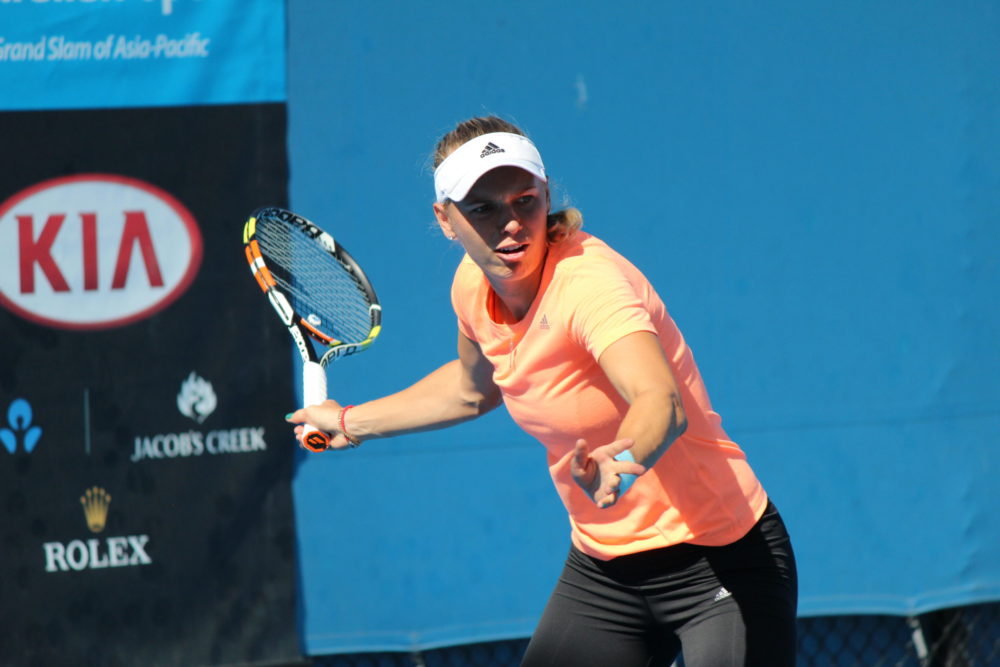It won’t be long before the players hit the courts for the Australian Open series. With a solid preseason under their belts and goals set for the upcoming season, it will be time to put all of that on the line and see how they match up against their fellow competitors.
Compete, derived from the Latin word ‘competere’, is defined as coming together and striving together. Modern definitions suggest however, that people are drawn together to dominate and gain; gain a title, gain a ranking, gain in financial winnings. Tennis is a vocation for these players and now they must perform at their best.
Motivation and focus will be tested during arduous long matches and for those who progress from one match to the next, finding that concentration and focus again and again will be necessary. Emotions will ebb and flow, it is impossible to expect a stoic presence through the course of a match, let alone throughout a player’s time spent at the tournament. However, knowing how to manage those emotions and energy to facilitate performance will be key.
Just as a battery loses it’s strength, players will be tested when their bodies begin to tire and mental resources begin to drain. Managing their energy efficiently will mean engaging emotional intelligence between points and at changeovers. Energy management becomes ever so important when matches run into a few hours. With evidence that more than 75% of the match is time spent between points (Woo, 2013), there is plenty time to gather ones thoughts and set aside any concerns rather than dwell on them.
Peck (2000) in his writings about the game of golf, suggests that a golfer must undertake ‘kenosis’ in order to abandon the demons that consume ones mind and energy after a bad shot. ‘Kenosis’ is a process of emptying oneself of the thought or practice that creates a roadblock in performance. Given that mindfulness has it’s place in enhancing sport performance (Baltzell & Akhtar, 2014), a tennis player may wish to integrate some mindful approaches on the tennis court in order to let go of the thought (kenosis) driving those emotions that may be sapping energy.
- Notice the distracting thought with curiosity and without judgement. What is the situation that causes you to think and feel in such a way? Gain some distance from the feeling. You are not the feeling! What sensations show up in your body – be mindful and aware of how anger, anxiety and other emotions drive your body sensations.
- Know you can only control what is in your capacity – ie. we can not control the outcome, how the other person plays, the umpire’s/linesman’s call. Recognise the here and now is about what you can do and manage in this moment. No amount of negotiation with the umpire will change the decision. So just let it go by acknowledging and accepting.
- Refocus your mind on your breathing – in for four, out for four and repeat a few times making sure to draw in deep breaths.
- Reset your attention with a short routine whilst re-aligning with your values (these may be to compete, be compassionate towards yourself – mistakes are part of the game, to enjoy the battle through challenging moments)
Those who fail to recognise how to manage distracting thoughts of the past or future outcome, will be dragged down with feelings that may mirror the same mild depression that takes hold of a golfer striving for perfection in his/her game. Players that dwell on the last point, will likely become consumed by emotions that sap those battery juices more rapidly. Before long, it may be game, set and match to the opposition, and all because of the inability to manage emotions that ebb and flow!
Using a few seconds to notice, accept, breathe and refocus, will allow the player to remain in the present. Between point routines will prove effective ways to get the mind back to the present and tennis players can often be seen fiddling with their racquet strings, bopping up and down or simply re-adjusting their clothing to reset and refocus. These are the moments to take a deep breath, line up the next play in mind and turn to face the next point with clarity. Such routines that incorporate visualising the point, are known to improve performance in tennis and other sports (Moore & Stevenson, 1994). And quotes such as those written on Wawrinka’s arm are also a helpful method, and a reminder to be grateful and compassionate towards oneself when those unhelpful thoughts take hold.
So as you tune into the coverage of the summer down under, take note of the routines performed and notice the players who reset their focus for the next play. And the next time you’re on court think about how you will perform the act of ‘kenosis’ and be more mindful to help you stay present focused and energy efficient.
References:
Baltzell, A and Akhtar, V. L. (2014). Mindfulness Meditation Training for Sport (MMTS). Intervention: Impact of MMTS with Division I female athletes. Journal of Happiness and Wellbeing, 2(2), 160-173.
Moore, W.E. & Stevenson, J. R. (1994). Training for trust in sport skills. Sport Psychologist 8, 1-12.
Peck, M.S. (2000). Golf and the spirit: Lessons for the journey. London: UK, Simon and Schuster.
Woo, S. (2013, September, 4). How Much Tennis Is Played During a Match? The Wall Street Journal. Retrieved from http://online.wsj.com/news/articles/SB10001424127887323932604579053172340374060
“Shameema Yousuf is Founder/Sport Psychology Consultant of Empower2Perform (www.empower2perform.com)”

